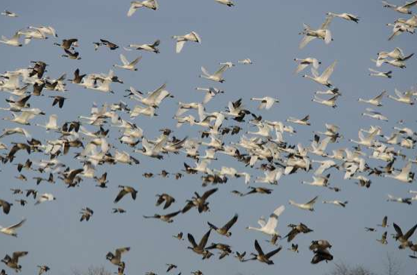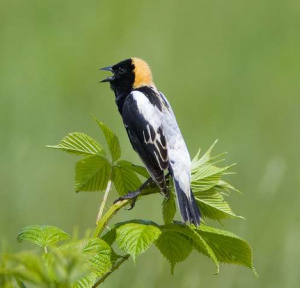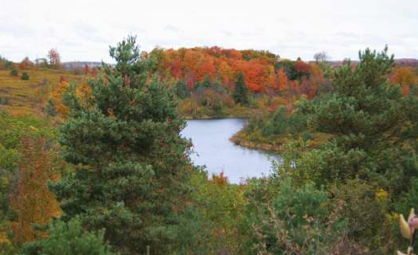The 21st annual Christmas Bird Count for Halton Hills was held on December 27, 2011. The weather that day was marked by a fairly constant snowfall that restricted viewing of birds and generally made for a dull day with temperatures just above the freezing mark.
The results for the 2011 Count are summarized in the attached table. For comparison, the average and high numbers recorded for the previous 20 years are also included in the table. The total number of species recorded for the day plus Count Week was 56 and that is just below the maximum count of 57 species. The species count was bolstered by five new species including Northern Shoveller, Ring-necked Duck, Lesser Scaup, and Red- breasted Merganser observed at the Maple Lodge farms sewage lagoons. The Mute Swan was seen at an estate on the 10th Line near Terra Cotta but although it was counted here, caution needs to be exercised in case it is really a captive bird. With the new additions, the cumulative number of species for the Count Area rises to 101. Two species (Great Blue Heron and Easter Screech Owl) were found in Count Week and not on Count Day. The total number of birds (10777) is somewhat higher than the long-term average count of 9744. Considering the weather, the day has to be viewed as very successful.
New high numbers of Common Goldeneye (18) and American Robin (266) were encountered and this might be attributable to conditions prevailing during or slightly before the count period for 2011. New high numbers of Red-bellied Woodpecker (11) are likely due to increases in the local resident population for the species is known to be increasing substantially across Southern Ontario. Both Green-winged Teal and Bufflehead with two birds each increased from the previous high count of only one. Black-capped Chickadee matched the previous high of 465 birds. Other species were present in numbers within previously established ranges for the respective species.
In total, 23 people participated in the count, either as observers or as feeder watchers. Thanks to the following participants: Anna Baranova, Judy Biggar, Brad Bloemendal, Ray Blower, Mark Cranford, Betty Ann Goldstein, Charles Hildebrandt, Larry Martyn, Diane McCurdy, Irene McIlveen, W.D. McIlveen, Michael Pearson, Fiona Reid, Valerie Rosenfield, Don Scallen, Dan Shuurman, Chris Street, Rick Stroud, Janice Sukhiani, Jake Veerman, George Wilkes, Marg Wilkes, and Dave Williams.
Many thanks to Larry May for arranging access to the Maple Lodge Farms property and to Halton Regional Police for use of the community boardroom for the wrap-up session.

by W.D. McIlveen
Halton/North Peel Naturalist Club









